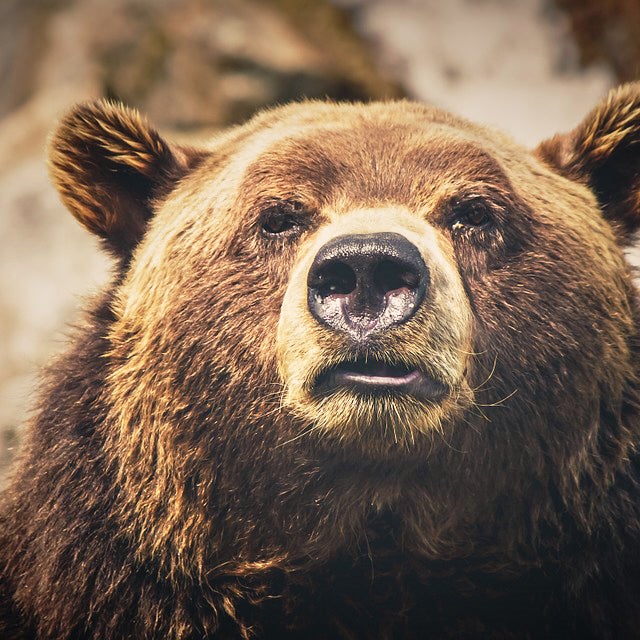The principality of , located in the far north of Spain, is dramatic and hard country.╠²With mountains rising steeply from the coast, and bashed by cold winter storms rolling in from the Atlantic, the climate has more in common with parts of Siberia than the rest of the country. Culturally it is also very different. While chatting in a small pub, with the head of a wild boar hanging from the wall, one will often hear ŌĆ£Asturias is Spain; the rest is conquered territory,ŌĆØ referring to the invasion of the Moors in times past.╠²
This stark terrain has also been a godsend for wildlife. Species that have long been lost from other parts of Europe have found sanctuary in these mountainsŌĆöfrom wolves to the Ice Age holdover, the . But perhaps one species above all has come to embody this landscape: the brown bear.╠²
While in North America the Great Plains once marked the eastern frontier for Urus arctos, the speciesŌĆÖ westerly limit is Spain. The same grizzled bear that chases caribou through the Yukon also calls the broadleaf forests of the Cantabrian Mountains home. While bruins in the Yukon can weigh as little as 180 pounds, and Alaskan coastal bears as much as 1,500 pounds, Spanish bears are somewhere in the middle. Males usually tip the scales at around 300 pounds, with females 20-25 percent smaller. Forest rangers I spoke with mention seeing males weighing over 600 pounds.╠²
Regardless of weight, there is no such thing as a small brown bear.╠²
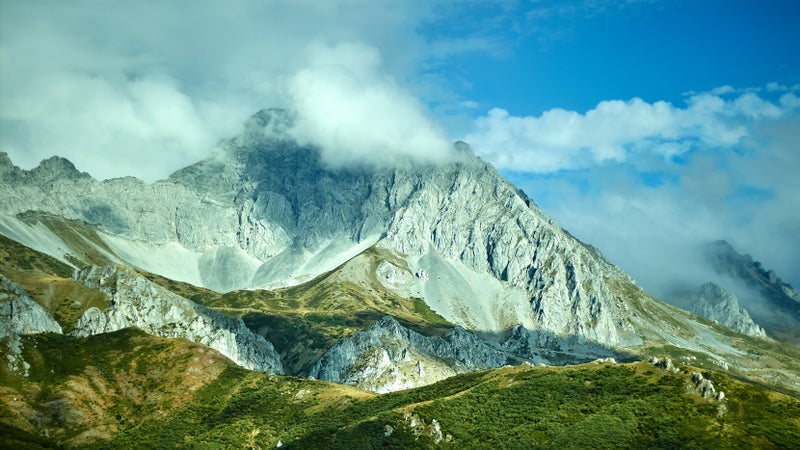
A Dictator and Neck Snares
In a mosaic landscape of forest, mountainside, and open pasture, bears here need to be adaptable. Some one million people call Asturias home. Part of a╠²hardy culture, the people here╠²have traditionally made their living by crawling deep into the earth to extract coal, or from raising the╠²cattle that graze their rich hillsides. But times have seldom been easy for bears or people here.╠²
The dictatorship of General Francisco Franco, from the end of the Spanish Civil War to his eventual death in 1975, was a time of general hardship and slow development for the country. Although this period caused some traditional agricultural practices to survive, it also led to harsh environmental policies and lack of protection for the species, which contributed to a steep decline in the bear population. Natural forests were turned into plantations, ski resorts were built, and poaching was rampant. Legal hunting of bears was even permitted until the late 1960s. With such sustained pressure, the population eventually fell to as few as 80 individuals. Finally, in 1973, the species was given protection.╠²
Today, theyŌĆÖre clawing their way back. The current population stands at more than 200 bears in the western Cantabrian Mountains, and over 30 in the eastern. There is also a population of bears in the PyreneesŌĆöaround 30 individualsŌĆöwhich was reintroduced following their extinction in the region.╠²
With populations generally rising in the Cantabrian Mountains, these survivors still face pressure from development, habitat destruction, and poaching. Neck snares put out for wild boar frequently trap bears.╠²
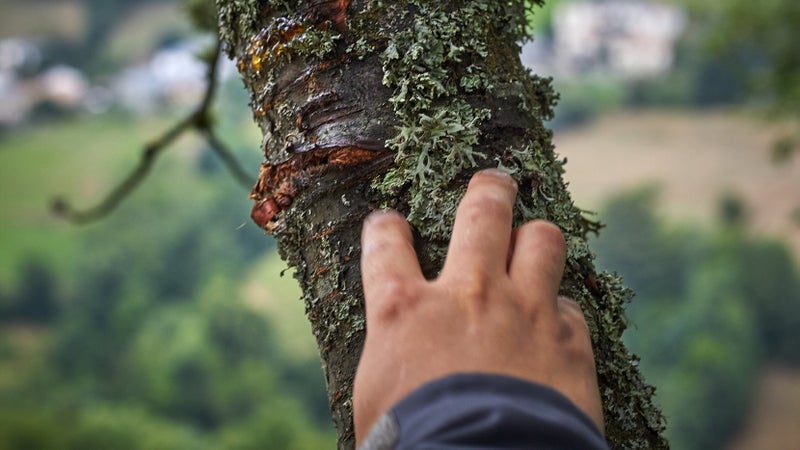
The Fox and the Bear
Bears beat the earth when╠²they walk, sending a vibration radiating through the land. Sweet sap oozing from deep claw marks in the bark of a tree, a heaping scat in the middle of a forest lane; such signs, and their unseen presence are what turn a landscape from beautiful to electric. The presence of bears symbolizes a truly wild place.╠²
Earlier this year, a╠²very kind friend had generously allowed me to stay in his stone cabin in a small pueblo at the base of a mountain. Warmth in a foggy world. I woke early, the air quiet outside, and swung a tripod over my shoulder. Gravel underfoot filled my ears as I made my way to the car. I had a spot in mind to glass. Ten╠²yards from the car, out of the corner of my eye, I noticed a large dark shape moving across an open field on the other side of our small valley. My heart quickened. I raised my binoculars and they were immediately filled with a bear. Slowly swaggering along, I noticed he wasnŌĆÖt alone. Not two yards behind was a red fox, following a beast that easily outweighed him 30 times.╠²
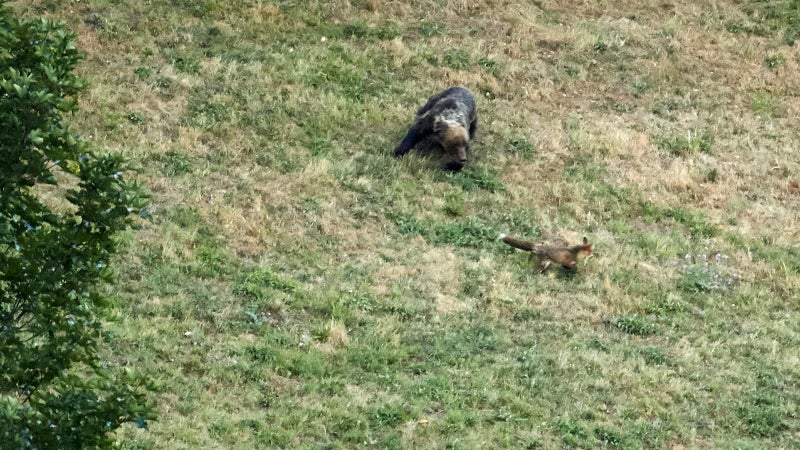
Every few minutes the fox would approach the bear and nip at his heels. The bear in turn would swing round and charge the fox. A brown bear can kill a moose with a single swipe of its claws, so this was quite a daring act on the part of the╠²fox. The two made their way through grassy fields and forests of oak, repeating this dance for almost 30 minutes as I watched in amazement. Eventually the beat took them back into a dark thicket and I lost sight.╠²
I had never seen anything like this before. After asking a prominent biologist who has studied bears and wolves in this area for many years, he too had never seen a fox and bear interact in such a way. Our best guess was that the fox had a den in the area and simply wanted the bear gone.╠²
Over the next few days three more bears graced me with their presence. The mountains of Asturias are neither the remote Alaskan arctic nor the backcountry of Yellowstone. But that doesnŌĆÖt matter, because where there are brown bears there is the wild. In these wild mountains, with the howl of the wolf and track of bear, the pulse of the country is thrilling. ╠²
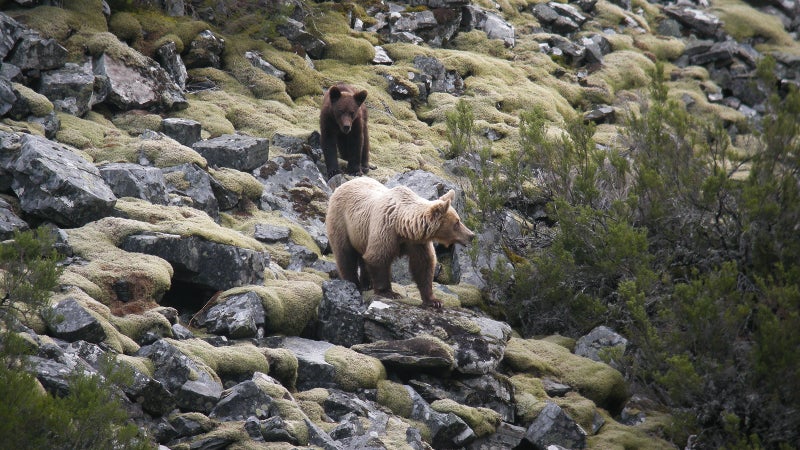
A Strong Future
Brown bear populations are growing steadily, much of that rise due to the efforts of conservation organizations such as (FOP). Their work to reforest land, reduce poaching, as well as to facilitate compensation for farmers who have suffered damages caused by wolves and bears has greatly helped the population.╠²
I asked Guillermo Palomero, president of FOP, what would be his suggestion to outsiders considering coming to Spain to see the bear.╠²
ŌĆ£The north of Spain is rich in biodiversity, with welcoming people and a vibrant food culture,ŌĆØ Palomero╠²describes. ŌĆ£Bring appropriate optics and the usual equipment to move in a mountain environment. It is important to choose the right dates; bears are more visible in April and May, or between August and September.ŌĆØ╠²
ŌĆ£Cantabrian bears live in a humanized environment and their proximity to villages and human activity is surprising,ŌĆØ he continues. ŌĆ£ItŌĆÖs a striking example of cohabitation.ŌĆØ
Bears mean different things to different cultures. As I drove out of Asturias, along those same narrow winding roads I could not help but think that this place can serve as a lesson for conservation elsewhere. If the communities in this pastoral corner of Europe can live with a large bears wandering their woods, then so can others. People and large carnivores can co-exist, but we do need to make room for them and hold their presence in high regard. As Aldo Leopold , without the bear, ŌĆ£itŌĆÖs only a mountain now.”



